Jews and Judaism in Greater Cleveland
The Jewish community of the Greater Cleveland area comprises a significant ethnoreligious population of the U.S. State of Ohio. In the early 21st century, Ohio's census data reported nearly 150,000 Jews, with the Cleveland area being home to more than 50% of this population.[1] In 2012, the Jewish Population in Greater Cleveland was estimated at 80,800. [2]
History
In 1839, the first Jewish immigrants came to Cleveland from Bavaria. The first Jewish immigrant was a man named Simson Thorman.[3] Within 25 years, the population of Jews grew to 1,200.
From the late 1800s and well into the 1950s, the vast majority of Jews lived in the inner city neighborhoods of Hough and Glenville. In 1920, the Jewish population grew up to 90,000.
By the 1940s, many Jews lived in Glenville, Hough, and the then newly built Shaker Heights and Cleveland Heights neighborhoods. There were dozens of synagogues spread throughout these neighborhoods, which were diverse in terms of wealth based class of Cleveland Jews. Glenville and Hough were older neighborhoods in the inner city with densely built tenement houses, while the Heights was considered a wealthier neighborhood, given the mansions that had been built there throughout the early 1900s. E.105th Street in Cleveland was often referred to as "Yiddishe Downtown", or "Jewish Downtown", as the busy street was filled with high rise buildings which held hundreds of Jewish owned businesses.[4]
By the 1950s and 1960s, the Jewish Community rapidly started to move further into the then newly developed suburbs of Cleveland Heights, University Heights, Shaker Heights, South Euclid, and Beachwood. This left the once historically Jewish Glenville neighborhood into a majorly African American neighborhood.

By the 1980s, there were more than 150 Jewish organizations in the Greater Cleveland area.[5]
As of 2016, there are about 80,800 people, who mostly live in the eastern suburbs of Solon, Beachwood, Moreland Hills, Pepper Pike, South Euclid, Shaker Heights, Cleveland Heights, University Heights and Orange.[6]
Diaspora of Jews throughout Cleveland
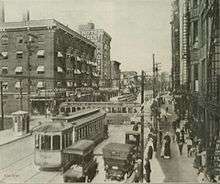
Like many other cities in the United States, Cleveland throughout history has seen several demographic shifts persist among various neighborhoods. Cleveland's Jewish community tended to follow the movement of other white families in the inner city, pursuing better living conditions and moving jobs that weren't available in the densely population inner city. This often turned once generally wealthy predominantly Jewish neighborhoods into poor predominantly African-American neighborhoods.[7] Given that Jewish communities tend to maintain close, dense ties within them, Cleveland's Jewish demographic shift is seen through the movement of Jews through different neighborhoods over the decades.[8]
Cleveland's first Jews settled in downtown Cleveland in 1839, with Cleveland's first few dozen Jewish families establishing the Cleveland Israelitic Society. This was the city's first synagogue, located on Eagle Street, now the site of Progressive Field.[9] Over time, as Cleveland's Jewish population grew parallel to the city of Cleveland's growth and development into a major city, the Jewish community shifted east into what were then newly developed neighborhoods. By the mid-late 1800s, the majority of Cleveland's Jews lived in the Hough neighborhood of Cleveland. Several large and historic synagogues were built throughout the neighborhood, many of which are still standing as historic landmarks today, now being used as African-American churches.[10]
By 1926, the majority of Cleveland's Jews had moved out of the Hough and Woodland neighborhoods for the further east Mt. Pleasant and Glenville neighborhoods. Glenville became a dense center of Jewish life in Cleveland, with the Jewish demographics of the neighborhood reaching above 90% in the 1930s. E.105th Street in Glenville is noted as once being a thriving Avenue of Jewish life, with dozens of Jewish grocery stores, shops, businesses, and synagogues once lining along the street.[11] After WWII, the Jewish community started to follow other white families in the inner city into the then newly developed neighborhoods in Cleveland Heights, Shaker Heights, and University Heights, often referred to as simply "Heights" by the Cleveland Jewish community.[12] As with the Hough and Woodland neighborhoods, Glenville turned into a mostly African-American neighborhood.

In 1948, a heated village-wide debate was sparked in Beachwood after a proposal for the construction of the Anshe Chesed Fairmount Temple was presented to the village council, making it the first synagogue within the village limits of the then mostly non-Jewish neighborhood.[13] Antisemitism persisted throughout the village for decades, and was only grown with the proposal of the synagogue. The argument eventually turned into an Ohio Supreme Court case, which ruled that the synagogue must be allowed to be built on its current site in Beachwood.[14] The large synagogue prompted congregants, mainly hundreds of Jewish families, to move to Beachwood. Hundreds of more Jewish families continued to move to Beachwood throughout the 1950s, with the rapid population growth prompting Beachwood to be established as a city in 1960. With Cleveland's over 80,000 Jews now living in the east side suburbs, the beginning of a halt in rapid movement started, creating the current demographics of a Jewish community seen today in Cleveland. By the mid 1970s as the Jewish community grew, Jews started to move into the newly developed neighborhoods of Orange and Pepper Pike, and continued to move southeast into Solon by the 1990s. The eastern suburbs of Cleveland continue to hold a thriving Jewish community today.[15]
Education
There are five Jewish Day Schools in Greater Cleveland: The Joseph and Florence Mandel Jewish Day School, Gross Schechter Day School, Fuchs Mizrachi School, Yeshiva Derech Hatorah, and the Hebrew Academy of Cleveland.[16] Approximately 3000 students attend these schools. [17] While Mandel JDS and Schechter educate up to 8th Grade, the Orthodox Schools educate through High School.
Akiva High School of Cleveland is a school that offers programs and classes for Jewish high schoolers in a variety of fields, including Hebrew classes, Israel advocacy, and other Jewish studies.[18]
Beachwood High School, a school with one of the highest percentage of Jewish students, offers Hebrew as a foreign language class.[19] Most public and private East Side suburban schools with significant numbers of Jewish students have a Jewish Student Union Club.
The Telshe Yeshiva, a rabbinical college relocated from Lithuania to the Greater Cleveland area in 1941 during the Holocaust, has a main campus in Wickliffe.[20]
Jewish Institutions in Greater Cleveland
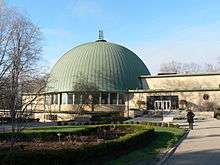
There are many Jewish Institutions in the Greater Cleveland Jewish Community:
The Jewish Federation of Cleveland is headquartered in Beachwood.
The Maltz Museum of Jewish Heritage is in Beachwood.
The Mandel Jewish Community Center, located in Beachwood, is a center point of the Jewish community.
The Workmen's Circle of Cleveland is a Jewish lodge group.
The Friendship Circle Organization for children with special needs has a center in Pepper Pike.
Menorah Park is a Jewish nursing home complex in Beachwood.
The Cleveland Hillel is located on the Case Western Reserve University campus.
Synagogues in Greater Cleveland
There are dozens of synagogues of several denominations in Cleveland. There are multiple Reform, Reconstructionist, Conservative, and Orthodox synagogues.[21]
*Note, all synagogues may not be listed. Unregistered Shtiebel synagogues exist in some homes, with congregations as small as only a few families.
- Agudath B'nai Israel, Lorain; Conservative
- Ahavas Yisroel, Cleveland Heights; Orthodox
- Aish Hatorah, University Heights; Orthodox
- Anshe Chesed Fairmount Temple, Beachwood; Reform
- Beachwood Kehilla, Beachwood; Orthodox
- Beth El- The Heights Synagogue, Cleveland Heights; Reform
- Beth Israel- Westside Temple, West Park, Cleveland proper; Reform
- B'nai Jeshurun, Pepper Pike; Conservative
- Chabad of Cleveland Heights, Cleveland Heights; Orthodox
- Chabad at Case Western Reserve University, University Circle, Cleveland proper; multi-denominational
- Chabad of Downtown Cleveland, Downtown Cleveland, Cleveland proper; multi-denominational
- Chabad House of Cleveland, University Heights; Orthodox
- Chabad of Mayfield, Mayfield Heights; multi-denominational
- Chabad of Solon, Solon; Orthodox
- Chabad of Twinsburg, Twinsburg, multi-denominational
- Congregation Zichron Chaim, University Heights; Orthodox
- Congregation K'hal Yereim, Cleveland Heights; Orthodox
- Congregation Shaarey Tikvah, Beachwood; Conservative
- Congregation Shomre Shabbas, University Heights; Orthodox
- Fromovitz Chabad Center, Beachwood; Orthodox
- Green Road Synagogue, Beachwood; Orthodox
- Heights Jewish Center Synagogue, University Heights; Orthodox
- Jewish Secular Community of Cleveland, Solon; Reform
- Kol Ha'lev, Pepper Pike; Reform/Reconstructionist
- Oheb Zedek-Cedar Sinai Synagogue, Lyndhurst; Orthodox
- Oheb Zedek-Taylor Road Synagogue, Cleveland Heights; Orthodox
- Semach Sedek, South Euclid; Orthodox
- Suburban Temple Kol Ami, Beachwood; Reform
- Temple B'nai Abraham, Elyria; Reform
- Temple Emanu-El, Orange; Reform
- Temple Israel Ner Tamid, Mayfield Heights; Reform/Conservative
- Temple Tifereth Israel, Beachwood and University Circle, Cleveland proper; Reform
- The Park Synagogue, Cleveland Heights; Conservative
- Park Synagogue East, Pepper Pike; Conservative
- Torah U'tefila, Cleveland Heights; Orthodox
- Yeshivath Adath B'nai Israel, University Heights; Orthodox
- Young Israel of Greater Cleveland, Beachwood; Orthodox
- Zemach Zedek, Cleveland Heights; Orthodox
Soviet-Jewish community
.jpg)
Greater Cleveland is home to one of the largest Soviet-Jewish populations in the U.S., after New York City. Though the exact number of Soviet-Jews living in Cleveland is difficult to find, it is estimated that 10,000–30,000 Soviet Jews reside in Greater Cleveland, most of whom live in Mayfield Heights, Solon, Beachwood, and Orange. Almost all Soviet immigrants to the U.S. are Jewish, as only Jewish families were allowed to come to the U.S. as refugees. Cleveland is also home to Jewish owned Russian grocery stores, the largest being Yeleseyevsky Deli, as well as hundreds of Soviet-Jewish owned and Russian speaking businesses such as restaurants, retail stores, jewelers, pharmacies, and private warehouses.[22]
In 1963, The Cleveland Council on Soviet Antisemitism was one of the first councils in the U.S. that brought the attention of the lives of Jews living in the Soviet Union,[23] a time in which pogroms were common, Jews were discriminatorily marked on their documentation, and Jewish citizens of the USSR were commonly arrested for false or over-exaggerated crimes (See Soviet Jewry Movement). The council's biggest attempt was not only to inform about antisemitism, but also to bring in as many Jewish refugees from the USSR as possible. Throughout the 1960s into the 1980s immigration was slow. But, with Mikhail Gorbachev's allowance of Jewish emigration in 1989, the Cleveland Jewish Community immediately resettled hundreds of Soviet-Jews in the Greater Cleveland area, most of whom moved into apartments in Mayfield Heights, East Cleveland, South Euclid and Cleveland Heights. Within a few years, the number of Soviet-Jewish refugees in Cleveland had risen to a few thousand, and by the late 1990s had reached about its current number.[24]
Though Soviet-Jews typically started off poor in the U.S., many rapidly grew into the upper middle class within a matter of a few years. This particularly unusual case of immigrants becoming so rapidly successful is contributed to a mix of progressive Soviet education and employment in the sciences, engineering, doctoring, and literature, as well as with the help of the Cleveland Jewish Community with things such as childcare, employment finding, English classes at Cuyahoga Community College, and help with rent and housing.[25]
Because the majority of Soviet-Jewish immigrants in the 1980s–1990s were young couples, thousands of new Russian-Jewish families were started in Cleveland, and bilingual English-and Russian-speaking children are currently raised in Cleveland.
The bringing of Soviet-Jewish immigrants also brought a new wave of Yiddish speakers to Greater Cleveland, an almost reverse effect than that of the Jewish communities in the rest of the U.S. Yiddish is the second dominant language of Soviet Jews after Russian, especially for Jews coming from shtetls and cities with large historic Jewish populations in Ukraine and Belarus such as Odessa, Minsk, and Slavuta. Most Soviet Jews born before 1960 have skills in speaking Yiddish.
Greater Cleveland is also home to three predominantly Jewish Russian newspapers, Russian Magazine and Prospect being two of them. The newspapers serve most Russians and Russian Jews in the area. Also, because of the extensive advertising for local Russian businesses, all newspapers are free and are issued to whoever orders a subscription. Russian Magazine celebrated its 20th year of production in 2013. Newspapers include sections of political news of the U.S., Russia, and other world news, anecdotes, and extensive advertisements for Russian speaking job openings, private practice Russian dentists and doctors, and Russian speaking restaurants, stores, and businesses in the Cleveland area.[26]
Jewish Youth in Greater Cleveland
There are several Jewish youth group chapters in Greater Cleveland, including BBYO, USY, NCSY, and NFTY.
Greater Cleveland is home to one of the largest BBYO Regions in the world, the Ohio Northern Region #23. ONR BBYO has been a staple of Jewish teens in the area since the 1930s, and since then has grown to the size it is today. ONR has approximately 600 members, with which they hold several annual conventions with the entire region. The Ohio Northern Region, based in Cleveland but also branched in Akron/Canton, Toledo, and Youngstown, have 17 different AZA and BBG Chapters. There are 9 ONR Chapters in Greater Cleveland.
Camp Wise is a Jewish summer camp located east of Cleveland in Chardon. Since 1907, Camp Wise has been the summer home to hundreds of Jewish kids and teens from grades 2-10 every year. Though the camp serves mostly campers from Cleveland, campers as well as counselors from around the world attend. Approximately 370 campers attend each session.
Most synagogues in Cleveland offer a wide variety of programs for Jewish kids and teens.
Akiva Cleveland is a school in Beachwood that teaches Jewish teens with Hebrew lessons, learning about Israel, and other Jewish studies.[27]
Orthodox community
Greater Cleveland is home to an established Orthodox Jewish community. The area is home to an estimated 10,000 Orthodox Jews, including Hasidic Jews.[28] There are fifteen Orthodox synagogues serving the Greater Cleveland community and three Jewish schools. Dozens of kosher restaurants, kosher grocery stores, Jewish bookstores, Hasidic clothing stores, as well as other Orthodox Jewish businesses are found around the Jewish community. The area is one of few locations in the world for the Telshe Yeshiva Rabbinical College. Greater Cleveland is also home to a notable sect of Hasidism, the Aleksander Hasidic Dynasty.[29]
There are three distinct neighborhoods where Greater Cleveland's Orthodox community is centered. The largest of these spans the adjacent municipalities of South Euclid, University Heights, and Beachwood, between Mayfield Road and Fairmount Boulevard on the north and south borders, and Richmond Road and South Belvoir Boulevard as the east and west borders. The center of the community is notably at the corner of Cedar and Green Roads, known as "Kosher Corner". The second largest is located in Cleveland Heights, with the main corridor of the neighborhood running between Mayfield Road and Cedar Road to the north and south, and between Lee Road and Warrensville Center Road to the east and west.[30] The third and smallest of the three is located near the Rabbinical College of Telshe, adjacent to Euclid Avenue and Bishop Road in Wickliffe.[31]
Greater Cleveland has an Eruv that covers the majority of the Orthodox neighborhoods, including Cleveland Heights, Beachwood, Shaker Heights, University Heights, and South Euclid. Following a severe winter storm on March 8th, 2018, a part of the eruv was downed, the first time in over 33 years for this to happen.[32]
There are many Orthodox organizations in Greater Cleveland. Aish Hatorah of Cleveland is an adult Judaic studies organization. Bellefaire JCB is a Jewish family organization. There are several mikvahs in Greater Cleveland.
Jewish Cemeteries
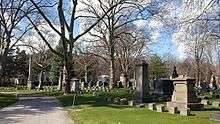
There are 16 Jewish cemeteries and 3 Jewish sections of cemeteries in Cleveland.[33] As of 2018, there are over 68,000 Jewish graves in the Cleveland area.[34]
- Agudath Achim
- Baxter Cemetery
- Beachwood Cemetery (Oer Chodesh Section)
- Berger Cemetery
- Bet Olam Cemetery
- Chesed Shel Emeth Cemetery
- Chesterland Memorial Park
- Fir Street Cemetery
- Glenville Cemetery
- Harvard Cemetery
- Hillcrest Memorial Park Cemetery (Section)
- Lansing Cemetery
- Mayfield Cemetery
- Mt. Olive Cemetery
- Mt. Sinai Cemetery
- Ridge Road Cemetery
- Western Reserve Memorial Gardens
- Willet Street Cemetery
- Zion Memorial Cemetery
Notable people
The following list includes notable people from, who live, or who have lived in Greater Cleveland and are Jewish. This list also includes people who are not from Greater Cleveland but have lived or live in Greater Cleveland, and have made a significant impact in the Cleveland community.
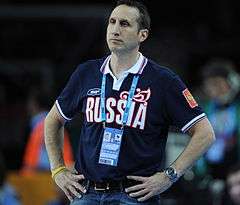

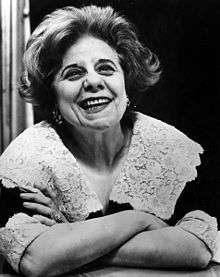
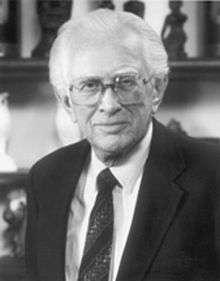
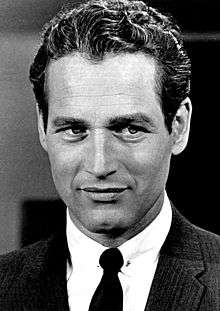

- Vanessa Bayer, Saturday Night Live cast member, comedian
- Arthur T. Benjamin, Mathematician
- David Mark Berger, Olympic weightlifter, killed by Palestinian terrorists at the 1972 Olympic Games in Munich, Germany
- David Blatt, Former coach of the Cleveland Cavaliers
- Stuart Blumberg, Writer and Director
- Andy Borowitz, creator of the Fresh Prince of Bel-Air, author
- Armond Budish, Executive of Cuyahoga County, 100th Speaker of the Ohio House of Representatives.
- Judith Butler, philosopher
- Gary Cohn, former director of the National Economic Council, former COO of Goldman Sachs
- Marc Cohn, Grammy Award winning singer-songwriter, known for his 1991 hit Walking in Memphis and other songs
- Rebecca Dallet, Supreme Court of Wisconsin Judge-Elect
- Grand Rebbe Shneur Zalman Dancyger, Grand Rebbe of the Aleksander Hasidic dynasty
- Marc Dann, former Attorney General of Ohio
- William Daroff, director of the Washington office of the Jewish Federations of North America
- Ted Deutch, US congressman from Florida since 2010, speaker at the 2016 Democratic National Convention
- Nachum Zev Dessler, rabbi, former head and dean of the Hebrew Academy of Cleveland
- Steven M. Dettelbach, lawyer, former United States Attorney for the Northern District of Ohio
- Mickey Edwards, former US Representative from Oklahoma
- Eric Ehrmann, writer
- Eric Fingerhut, president of Hillel International, Former US Congressman from Ohio and unsuccessful US Senate candidate
- Judah Folkman, scientist
- Lee Fisher, former Lieutenant Governor of Ohio under Ted Strickland and unsuccessful US Senate candidate
- Dorothy Fuldheim, news anchor
- Benny Friedman, football player and coach
- Donald A. Glaser, physicist, winner of the 1960 Nobel Prize in Physics
- Samuel Glazer, founder of Mr. Coffee
- Tamir Goodman, basketball player in Israel for Maccabi Tel Aviv
- Adele Goldberg, Computer Scientist
- Brad Goldberg, Chicago White Sox pitcher
- Joel Grey, actor
- Joel Hyatt, businessman, entrepreneur, and politician; founder of Hyatt Legal Clinics. Ran unsuccessfully for US Senate. Son-in-law of Howard Metzenbaum
- Eliezer Jaffe, Israel Free Loan Association Founder
- Carol Kane, actress
- Allison Krause, Kent State Shooting Victim, Vietnam War Protestor
- RB Kitaj, artist
- Ron Klein, Former US congressman from Florida
- Hal Lebovitz, sportswriter
- Arthur Lelyveld, rabbi and noted social activist
- Joseph Lelyveld, New York Times Executive Editor
- Al Lerner, businessman, former owner of the Cleveland Browns
- Ari Lesser, Orthodox Jewish rapper
- D.A. Levy, poet
- Peter B. Lewis, philanthropist, former CEO of Progressive Corporation
- Roy Lichtenstein, Cartoonist
- Terri Libenson, creator of the comic, The Pajama Diaries
- Todd Lieberman, film producer
- Josh Mandel, State Treasurer of Ohio, ran for US Senate
- Howard Metzenbaum, Former US senator from Ohio in 1974 and 1976–1995
- James Metzenbaum, attorney and cousin to Howard Metzenbaum
- Eric A. Meyer, web designer and author
- Paul Newman, actor and director
- Susan Orlean, journalist
- Paul Palnik, artist, writer, and teacher
- Harvey Pekar, cartoonist
- Dan Polster, federal judge of the United States District Court for the Northern District of Ohio
- Al Rosen, four-time all-star baseball player for the Cleveland Indians
- Milton Shapp, Former Governor of Pennsylvania, Presidential Candidate in the 1976 Presidential Election
- Chaim Schochet, real estate executive and developer.
- Mitchell Schwartz, offensive lineman for the Kansas City Chiefs, formerly for the Cleveland Browns
- Rob Senderoff, basketball coach for Kent State
- Jerry Siegel, co-creator of Superman with Joe Shuster
- Rabbi Abba Hillel Silver, prominent rabbi who met with President Harry Truman in promoting the creation of the State of Israel
- Joe Shuster, co-creator of Superman with Jerry Siegel
- Ray Solomonoff, Inventor of Algorithmic Probability
- Robert L. Stark, real estate developer and founder and CEO of Stark Enterprises
- Michael Wager, lawyer, Congressional candidate
- Milton A. Wolf, United States Ambassador to Austria
- Lew Wasserman, talent agent, won the Presidential Medal of Freedom in 1995
- Richard Zare, Professor
See also
References
- ↑ "Cleveland Jewish population: 80,800". Cleveland Jewish News.
- ↑ Editor, MARGI HERWALD ZITELLI CJN City. "Cleveland Jewish population: 80,800".
- ↑ "CJH - Simpson Thorman Family". www.clevelandjewishhistory.net. Retrieved March 24, 2017.
- ↑ "Cleveland Jewish History - Glenville". www.clevelandjewishhistory.net.
- ↑ "The Jewish Community of Cleveland". The Museum of the Jewish People at Beit Hatfutsot. Retrieved 1 July 2018.
- ↑ Editor, MARGI HERWALD ZITELLI CJN City. "Cleveland Jewish population: 80,800".
- ↑ "White Flight In Cleveland Ohio | Cities 2015". cities.williamgatens.com. Retrieved 2018-01-02.
- ↑ "http://case.edu/ech/articles/j/jews--judaism/". case.edu. Retrieved 2018-01-02. External link in
|title=(help) - ↑ "Eagle Street Synagogue - Cleveland's First Synagogue Building". www.clevelandjewishhistory.net. Retrieved 2018-01-04.
- ↑ "https://case.edu/ech/articles/j/jews--judaism/". case.edu. Retrieved 2018-01-02. External link in
|title=(help) - ↑ "http://case.edu/ech/articles/g/glenville/". case.edu. Retrieved 2018-01-02. External link in
|title=(help) - ↑ "Cleveland Jewish History - Glenville". www.clevelandjewishhistory.net. Retrieved 2018-01-02.
- ↑ "Finding aid for the Anshe Chesed Fairmount Temple, The Young People's Congregation Records". ead.ohiolink.edu. Retrieved 2018-01-04.
- ↑ CORRESPONDENT, JONAH ROSENBLUM | STAFF. "Beachwood: From anti-Semitic roots to thriving Jewish community". Cleveland Jewish News. Retrieved 2018-01-02.
- ↑ Editor, MARGI HERWALD ZITELLI CJN City. "Cleveland Jewish population: 80,800". Cleveland Jewish News. Retrieved 2018-01-02.
- ↑ akoehn@cjn.org, AMANDA KOEHN | STAFF REPORTER. "Jewish day schools celebrate Passover". Cleveland Jewish News. Retrieved 2018-03-22.
- ↑ https://www.clevelandjewishnews.com/features/special_sections/back_to_school/orthodox-jewish-schools-see-dramatic-growth/article_3d7a3244-76c2-11e7-808d-9783cb6ecf1e.html
- ↑ "@akiva". @akiva. Retrieved 2018-03-22.
- ↑ "Program of Studies". www.beachwoodschools.org. Retrieved 2018-01-09.
- ↑ "Rabbi Eliahu Meir Bloch". 2011-06-05. Retrieved 2018-03-22.
- ↑ "Access Jewish Cleveland". Access Jewish Cleveland. Retrieved 2018-03-22.
- ↑ "Cleveland and the Freeing of Soviet Jewry". www.clevelandjewishhistory.net.
- ↑ akoehn@cjn.org, AMANDA KOEHN | STAFF REPORTER. "Cleveland History Center's Soviet Jewish Oral History Collection to debut". Cleveland Jewish News. Retrieved 2017-12-27.
- ↑ "Refugee Resettlement and 'Freedom of Choice': The Case of Soviet Jewry". Center for Immigration Studies.
- ↑ http://ech.case.edu/cgi/article.pl?id=R7
- ↑ "Russian Magazine celebrates 20 years serving the Russian community of Cleveland".
- ↑ "@akiva". @akiva.
- ↑ jrosenblum@cjn.org, JONAH L. ROSENBLUM | STAFF REPORTER. "Orthodox Judaism vibrant in Cleveland Heights". Cleveland Jewish News. Retrieved 2017-12-27.
- ↑ "The survival of Aleksander". The Jerusalem Post | JPost.com. Retrieved 2017-12-25.
- ↑ https://www.clevelandjewishnews.com/features/special_sections/destination/orthodox-judaism-vibrant-in-cleveland-heights/article_40dbf660-4c27-11e5-9a94-6b2d97b22229.html
- ↑ https://www.clevelandjewishnews.com/news/local_news/telshe-yeshiva-opens-doors-to-entire-community/article_4b11f042-7c08-11e5-86aa-67370ab5d857.html
- ↑ bjacob@cjn.org, BOB JACOB | MANAGING EDITOR. "Crews work against clock to fix eruv in time for Shabbat". Cleveland Jewish News. Retrieved 2018-03-09.
- ↑ "Jewish Cemetery List". clevelandjgs.org. Retrieved 2017-08-29.
- ↑ "Jewish Federation of Cleveland: Cemetery Preservation Campaign". Jewish Federation of Cleveland. Retrieved 2018-07-17.